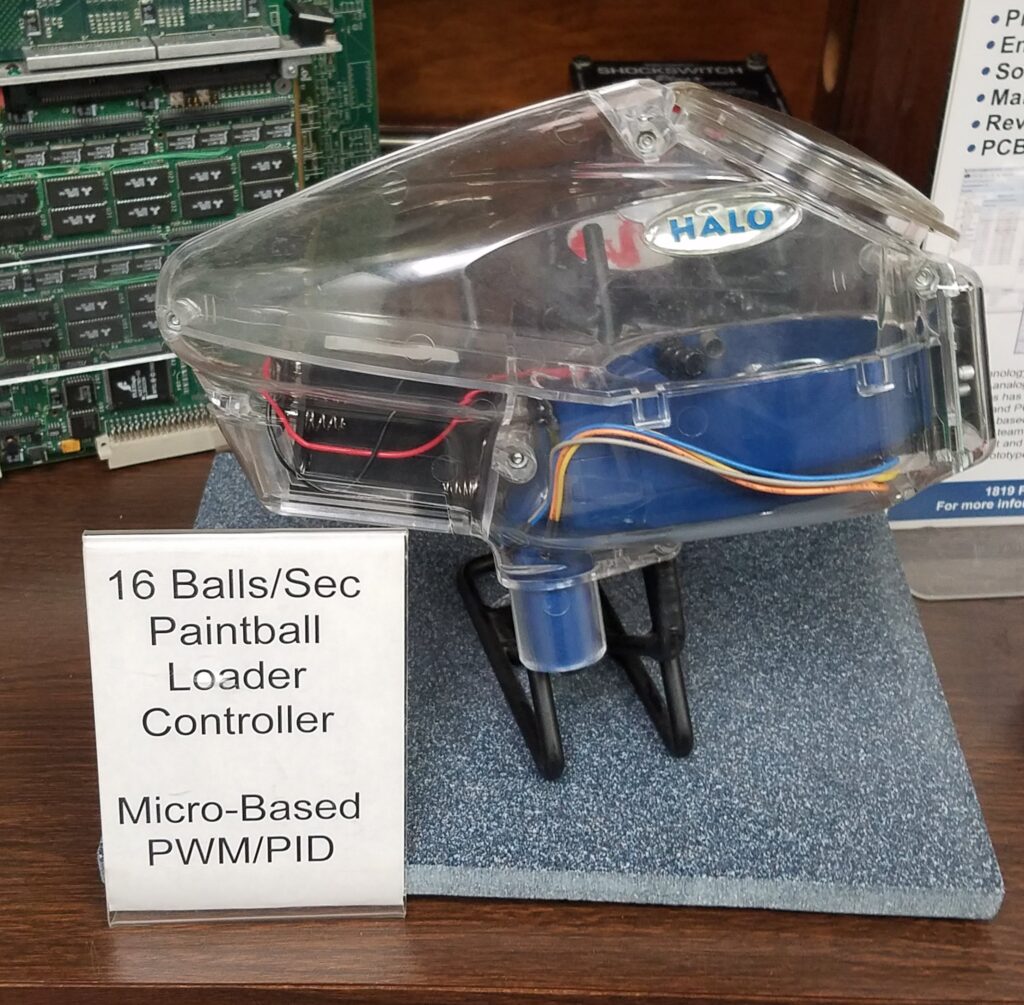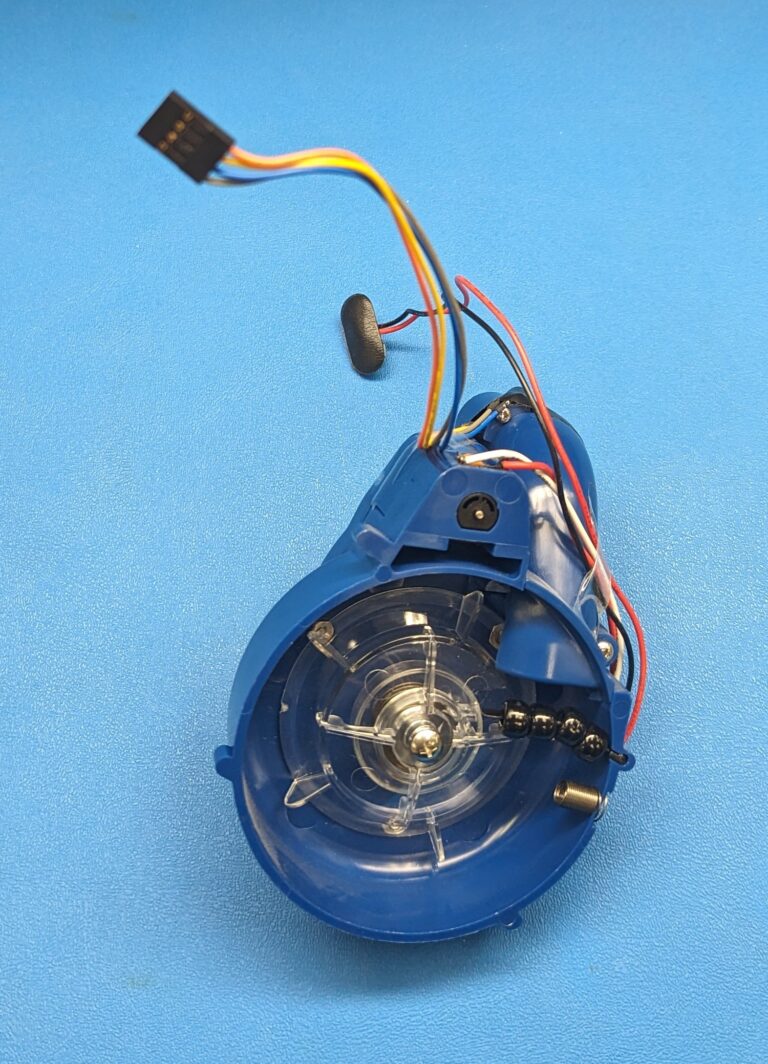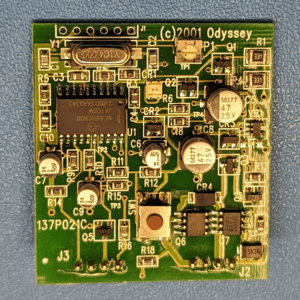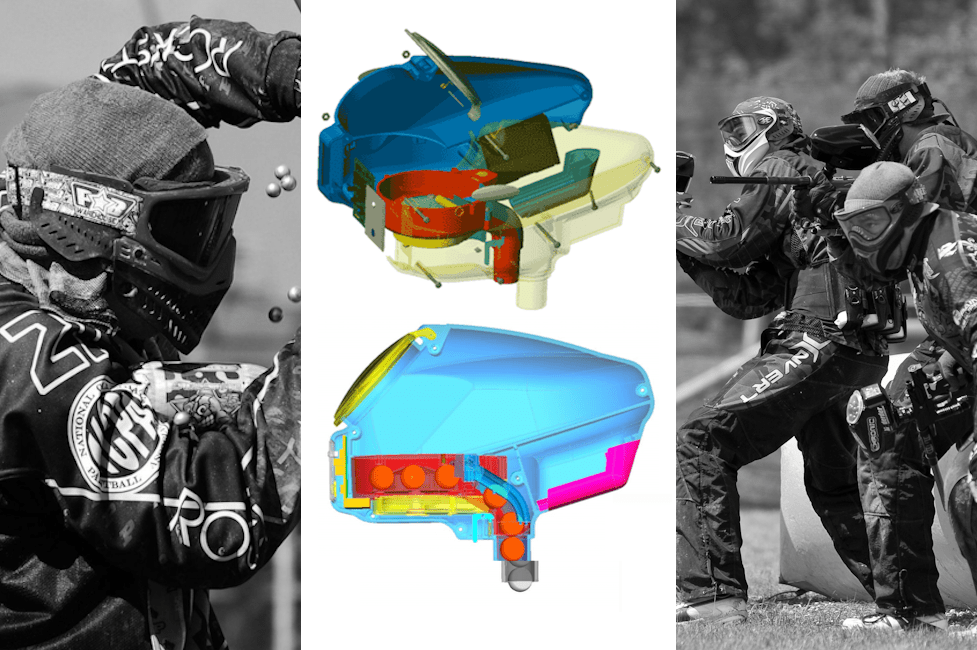The High-Speed Odyssey HALO Paintball Loader
Odyssey HALO feeds victory
If you have ever played a game of paintball, the first time you hit the field, you might plink a few paintballs at your opponent upon making contact. Then dozens of paintballs come whooshing back at you from guns fed by high-speed paintball loaders. Within a second, if you are not already dripping in paint, you’d have fired back with a machine like the Odyssey HALO paintball loader.
Half the game is suppressive fire. The other half is maneuver. If you put enough paintballs down range to discourage an opponent from moving, then you can maneuver into position and finish them off. During the first decade of the 2000s, a resulting arms race took off between players – and paintball hopper (or loader) developers — to up the feed rate to supply the tactical edge in spraying more paint than their opponents.
During this arms race, James “Tex” Christopher and Albert Schilling of Odyssey Paintball Products approached MTSI with a new idea for a high-speed, computerized paintball loader called the HALO (Highly Advanced Loader Operations) capable of shooting 16 paintballs per second.
Used with permission from Odyssey Paintball
But there was an existing patent on the Viewloader paintball loader by Brass Eagle. The patent covered the light beam which passed across the paintball loader and detected paintballs.
And that was a problem. A patent problem — and a technical problem too.
The Brass Eagle Viewloader agitating paintball loader patent (7021302) protects the idea of using “a sensor electrically connected to said motor and positioned to detect an absence of a paintball at a specified location within said outfeed tube.” But instead of detecting the absence of a ball with an infrared beam crossing the feed neck, the HALO utilizes an IR beam reflected off of the ball.
MTSI design engineers saw this mechanism as a simple Bang-Bang On/Off control algorithm for motors, which is common in the industry for many applications. A much better control system is a PID, which stands for Proportional Integral Differential.


At top: Odyssey HALO prototype. At left: prototype loader to detect the shape of a paintball. The IR sensor is at the very top of the feed tube. At right: the cone at the bottom feeds the balls and goes under the little black rollers, which are around a half-inch in size using water-based paint.
The PID speeds up and slows down as the balls empty the loader, and then integrates the speed to match the speed of the gun. As the gun starts firing, the PID uses the “D” (or difference) to make the motor spin up rapidly to match the sudden movement.
This is the same algorithm used in automotive speed controls. When a vehicle drives up a hill, the differential term steps on the gas. When driving on small grades and in wind loads, the proportional and integral terms kick in.
The PID plus bouncing the light off the paintball was the perfect solution for the HALO.


Odyssey also improved the mechanism to correct for blowback and other issues that could be fixed with an active CPU and close control of the rotor.
The CPU is an inexpensive (<$1) MC68HC09 8-bit processor with integrated A/D and PWM control for motor drive. MTSI was able to use the A/D to read the back-EMF from the motor as a speed indicator, reducing costs to a bare minimum.

The Odyssey HALO paintball loader knows the frequency and exact position of the ball, and it was possible for a player to fire the gun even when on its side – a tactical edge for players lying prone.
And it got around the patent issue.
Eventually a patent lawsuit was filed over this. MTSI’s project manager, who is also a P.E and an expert witness, testified about this solution, and the competitor dropped the lawsuit.
Odyssey’s new paintball loader is protected by U.S. patent no. 6213110.
In the field the HALO's performance was flawless … For front players and crawlers, the ability to feed when the paintgun is nearly laying on its side is a definite plus.
World And Regional Paintball Information Guide
HALO quickly became popular with paintball players. Odyssey’s paintball loader debuted with an extremely durable, internally reinforced design which packed around 170 paintballs. The electrics are also simple to operate.
We were proud to play a part in the HALO’s success – a classic case of great design by MTSI engineers.

Robert Beckhusen
Robert Beckhusen is a case studies and content marketing editor for Micro Technology Services.


